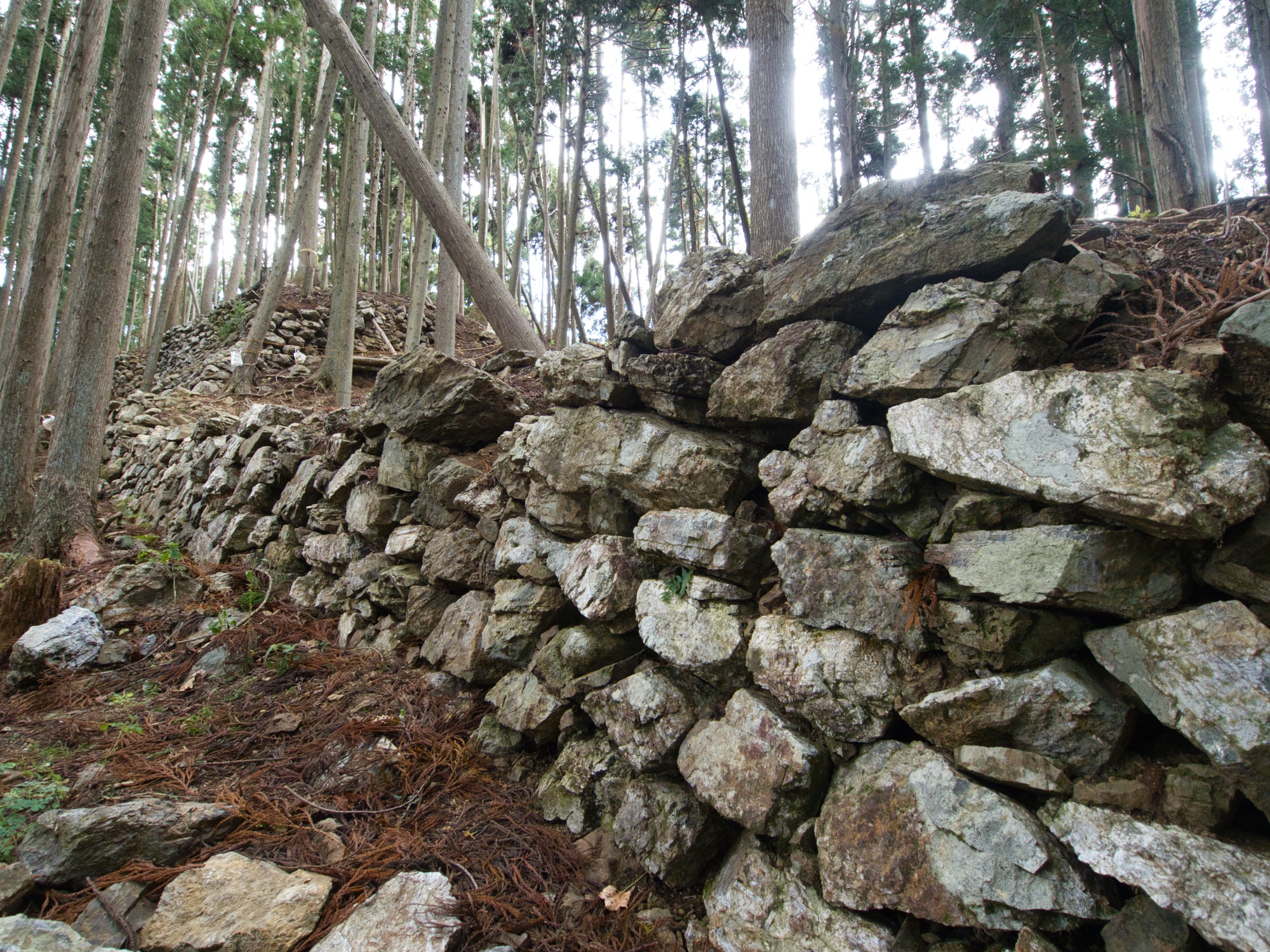Loading map...
{"format":"leaflet","minzoom":false,"maxzoom":false,"limit":500,"offset":0,"link":"all","sort":["order"],"order":[],"headers":"show","mainlabel":"","intro":"","outro":"","searchlabel":"... further results","default":"","import-annotation":false,"width":"auto","height":"350px","centre":false,"title":"","label":"","icon":"Darkred18.png","lines":[],"polygons":[],"circles":[],"rectangles":[],"copycoords":false,"static":false,"zoom":false,"defzoom":14,"layers":["Esri.WorldTopoMap"],"image layers":[],"overlays":[],"resizable":false,"fullscreen":false,"scrollwheelzoom":true,"cluster":false,"clustermaxzoom":20,"clusterzoomonclick":true,"clustermaxradius":80,"clusterspiderfy":true,"geojson":"","clicktarget":"","showtitle":false,"hidenamespace":true,"template":"InfoWindowProfile","userparam":"","activeicon":"","pagelabel":false,"ajaxcoordproperty":"","ajaxquery":"","locations":[{"text":"\u003Cdiv style=\"width:150px\"\u003E\n\u003Cp\u003E\u003Ca href=\"/view/File:Shuzan30.jpg\" class=\"image\"\u003E\u003Cimg alt=\"Shuzan30.jpg\" src=\"../images/thumb/5/5b/Shuzan30.jpg/125px-Shuzan30.jpg\" decoding=\"async\" width=\"125\" height=\"94\" srcset=\"../images/thumb/5/5b/Shuzan30.jpg/188px-Shuzan30.jpg 1.5x, ../images/thumb/5/5b/Shuzan30.jpg/250px-Shuzan30.jpg 2x\" /\u003E\u003C/a\u003E\n\u003C/p\u003E\n\u003C/div\u003E","title":"","link":"","lat":35.15696,"lon":135.62109,"icon":"../images/0/06/Darkred18.png"},{"text":"\u003Cdiv style=\"width:150px\"\u003E\n\u003Cp\u003E\u003Ca href=\"/view/File:Shuzan33.jpg\" class=\"image\"\u003E\u003Cimg alt=\"Shuzan33.jpg\" src=\"../images/thumb/7/7b/Shuzan33.jpg/125px-Shuzan33.jpg\" decoding=\"async\" width=\"125\" height=\"94\" srcset=\"../images/thumb/7/7b/Shuzan33.jpg/188px-Shuzan33.jpg 1.5x, ../images/thumb/7/7b/Shuzan33.jpg/250px-Shuzan33.jpg 2x\" /\u003E\u003C/a\u003E\n\u003C/p\u003E\n\u003C/div\u003E","title":"","link":"","lat":35.15696,"lon":135.62121,"icon":"../images/0/06/Darkred18.png"},{"text":"\u003Cdiv style=\"width:150px\"\u003E\n\u003Cp\u003E\u003Ca href=\"/view/File:Shuzan32.jpg\" class=\"image\"\u003E\u003Cimg alt=\"Shuzan32.jpg\" src=\"../images/thumb/8/87/Shuzan32.jpg/125px-Shuzan32.jpg\" decoding=\"async\" width=\"125\" height=\"94\" srcset=\"../images/thumb/8/87/Shuzan32.jpg/188px-Shuzan32.jpg 1.5x, ../images/thumb/8/87/Shuzan32.jpg/250px-Shuzan32.jpg 2x\" /\u003E\u003C/a\u003E\n\u003C/p\u003E\n\u003C/div\u003E","title":"","link":"","lat":35.15696,"lon":135.62119,"icon":"../images/0/06/Darkred18.png"},{"text":"\u003Cdiv style=\"width:150px\"\u003E\n\u003Cp\u003E\u003Ca href=\"/view/File:Shuzan23.jpg\" class=\"image\"\u003E\u003Cimg alt=\"Shuzan23.jpg\" src=\"../images/thumb/3/30/Shuzan23.jpg/125px-Shuzan23.jpg\" decoding=\"async\" width=\"125\" height=\"94\" srcset=\"../images/thumb/3/30/Shuzan23.jpg/188px-Shuzan23.jpg 1.5x, ../images/thumb/3/30/Shuzan23.jpg/250px-Shuzan23.jpg 2x\" /\u003E\u003C/a\u003E\n\u003C/p\u003E\n\u003C/div\u003E","title":"","link":"","lat":35.15679,"lon":135.62285,"icon":"../images/0/06/Darkred18.png"},{"text":"\u003Cdiv style=\"width:150px\"\u003E\n\u003Cp\u003E\u003Ca href=\"/view/File:Shuzan1.jpg\" class=\"image\"\u003E\u003Cimg alt=\"Shuzan1.jpg\" src=\"../images/thumb/9/9c/Shuzan1.jpg/125px-Shuzan1.jpg\" decoding=\"async\" width=\"125\" height=\"94\" srcset=\"../images/thumb/9/9c/Shuzan1.jpg/188px-Shuzan1.jpg 1.5x, ../images/thumb/9/9c/Shuzan1.jpg/250px-Shuzan1.jpg 2x\" /\u003E\u003C/a\u003E\n\u003C/p\u003E\n\u003C/div\u003E","title":"","link":"","lat":35.15849,"lon":135.63164,"icon":"../images/0/06/Darkred18.png"},{"text":"\u003Cdiv style=\"width:150px\"\u003E\n\u003Cp\u003E\u003Ca href=\"/view/File:Shuzan2.jpg\" class=\"image\"\u003E\u003Cimg alt=\"Shuzan2.jpg\" src=\"../images/thumb/b/b2/Shuzan2.jpg/125px-Shuzan2.jpg\" decoding=\"async\" width=\"125\" height=\"94\" srcset=\"../images/thumb/b/b2/Shuzan2.jpg/188px-Shuzan2.jpg 1.5x, ../images/thumb/b/b2/Shuzan2.jpg/250px-Shuzan2.jpg 2x\" /\u003E\u003C/a\u003E\n\u003C/p\u003E\n\u003C/div\u003E","title":"","link":"","lat":35.15873,"lon":135.62978,"icon":"../images/0/06/Darkred18.png"},{"text":"\u003Cdiv style=\"width:150px\"\u003E\n\u003Cp\u003E\u003Ca href=\"/view/File:Shuzan3.jpg\" class=\"image\"\u003E\u003Cimg alt=\"Shuzan3.jpg\" src=\"../images/thumb/8/8c/Shuzan3.jpg/125px-Shuzan3.jpg\" decoding=\"async\" width=\"125\" height=\"94\" srcset=\"../images/thumb/8/8c/Shuzan3.jpg/188px-Shuzan3.jpg 1.5x, ../images/thumb/8/8c/Shuzan3.jpg/250px-Shuzan3.jpg 2x\" /\u003E\u003C/a\u003E\n\u003C/p\u003E\n\u003C/div\u003E","title":"","link":"","lat":35.15807,"lon":135.62796,"icon":"../images/0/06/Darkred18.png"},{"text":"\u003Cdiv style=\"width:150px\"\u003E\n\u003Cp\u003E\u003Ca href=\"/view/File:Shuzan4.jpg\" class=\"image\"\u003E\u003Cimg alt=\"Shuzan4.jpg\" src=\"../images/thumb/f/f0/Shuzan4.jpg/125px-Shuzan4.jpg\" decoding=\"async\" width=\"125\" height=\"94\" srcset=\"../images/thumb/f/f0/Shuzan4.jpg/188px-Shuzan4.jpg 1.5x, ../images/thumb/f/f0/Shuzan4.jpg/250px-Shuzan4.jpg 2x\" /\u003E\u003C/a\u003E\n\u003C/p\u003E\n\u003C/div\u003E","title":"","link":"","lat":35.15823,"lon":135.62649,"icon":"../images/0/06/Darkred18.png"},{"text":"\u003Cdiv style=\"width:150px\"\u003E\n\u003Cp\u003E\u003Ca href=\"/view/File:Shuzan5.jpg\" class=\"image\"\u003E\u003Cimg alt=\"Shuzan5.jpg\" src=\"../images/thumb/5/50/Shuzan5.jpg/125px-Shuzan5.jpg\" decoding=\"async\" width=\"125\" height=\"94\" srcset=\"../images/thumb/5/50/Shuzan5.jpg/188px-Shuzan5.jpg 1.5x, ../images/thumb/5/50/Shuzan5.jpg/250px-Shuzan5.jpg 2x\" /\u003E\u003C/a\u003E\n\u003C/p\u003E\n\u003C/div\u003E","title":"","link":"","lat":35.1582,"lon":135.62642,"icon":"../images/0/06/Darkred18.png"},{"text":"\u003Cdiv style=\"width:150px\"\u003E\n\u003Cp\u003E\u003Ca href=\"/view/File:Shuzan6.jpg\" class=\"image\"\u003E\u003Cimg alt=\"Shuzan6.jpg\" src=\"../images/thumb/b/bc/Shuzan6.jpg/125px-Shuzan6.jpg\" decoding=\"async\" width=\"125\" height=\"94\" srcset=\"../images/thumb/b/bc/Shuzan6.jpg/188px-Shuzan6.jpg 1.5x, ../images/thumb/b/bc/Shuzan6.jpg/250px-Shuzan6.jpg 2x\" /\u003E\u003C/a\u003E\n\u003C/p\u003E\n\u003C/div\u003E","title":"","link":"","lat":35.15665,"lon":135.62685,"icon":"../images/0/06/Darkred18.png"},{"text":"\u003Cdiv style=\"width:150px\"\u003E\n\u003Cp\u003E\u003Ca href=\"/view/File:Shuzan7.jpg\" class=\"image\"\u003E\u003Cimg alt=\"Shuzan7.jpg\" src=\"../images/thumb/9/90/Shuzan7.jpg/125px-Shuzan7.jpg\" decoding=\"async\" width=\"125\" height=\"94\" srcset=\"../images/thumb/9/90/Shuzan7.jpg/188px-Shuzan7.jpg 1.5x, ../images/thumb/9/90/Shuzan7.jpg/250px-Shuzan7.jpg 2x\" /\u003E\u003C/a\u003E\n\u003C/p\u003E\n\u003C/div\u003E","title":"","link":"","lat":35.15691,"lon":135.62636,"icon":"../images/0/06/Darkred18.png"},{"text":"\u003Cdiv style=\"width:150px\"\u003E\n\u003Cp\u003E\u003Ca href=\"/view/File:Shuzan8.jpg\" class=\"image\"\u003E\u003Cimg alt=\"Shuzan8.jpg\" src=\"../images/thumb/c/c6/Shuzan8.jpg/125px-Shuzan8.jpg\" decoding=\"async\" width=\"125\" height=\"94\" srcset=\"../images/thumb/c/c6/Shuzan8.jpg/188px-Shuzan8.jpg 1.5x, ../images/thumb/c/c6/Shuzan8.jpg/250px-Shuzan8.jpg 2x\" /\u003E\u003C/a\u003E\n\u003C/p\u003E\n\u003C/div\u003E","title":"","link":"","lat":35.15708,"lon":135.62489,"icon":"../images/0/06/Darkred18.png"},{"text":"\u003Cdiv style=\"width:150px\"\u003E\n\u003Cp\u003E\u003Ca href=\"/view/File:Shuzan9.jpg\" class=\"image\"\u003E\u003Cimg alt=\"Shuzan9.jpg\" src=\"../images/thumb/a/a1/Shuzan9.jpg/125px-Shuzan9.jpg\" decoding=\"async\" width=\"125\" height=\"94\" srcset=\"../images/thumb/a/a1/Shuzan9.jpg/188px-Shuzan9.jpg 1.5x, ../images/thumb/a/a1/Shuzan9.jpg/250px-Shuzan9.jpg 2x\" /\u003E\u003C/a\u003E\n\u003C/p\u003E\n\u003C/div\u003E","title":"","link":"","lat":35.1571,"lon":135.62484,"icon":"../images/0/06/Darkred18.png"},{"text":"\u003Cdiv style=\"width:150px\"\u003E\n\u003Cp\u003E\u003Ca href=\"/view/File:Shuzan10.jpg\" class=\"image\"\u003E\u003Cimg alt=\"Shuzan10.jpg\" src=\"../images/thumb/4/48/Shuzan10.jpg/125px-Shuzan10.jpg\" decoding=\"async\" width=\"125\" height=\"94\" srcset=\"../images/thumb/4/48/Shuzan10.jpg/188px-Shuzan10.jpg 1.5x, ../images/thumb/4/48/Shuzan10.jpg/250px-Shuzan10.jpg 2x\" /\u003E\u003C/a\u003E\n\u003C/p\u003E\n\u003C/div\u003E","title":"","link":"","lat":35.15714,"lon":135.62479,"icon":"../images/0/06/Darkred18.png"},{"text":"\u003Cdiv style=\"width:150px\"\u003E\n\u003Cp\u003E\u003Ca href=\"/view/File:Shuzan11.jpg\" class=\"image\"\u003E\u003Cimg alt=\"Shuzan11.jpg\" src=\"../images/thumb/0/09/Shuzan11.jpg/125px-Shuzan11.jpg\" decoding=\"async\" width=\"125\" height=\"94\" srcset=\"../images/thumb/0/09/Shuzan11.jpg/188px-Shuzan11.jpg 1.5x, ../images/thumb/0/09/Shuzan11.jpg/250px-Shuzan11.jpg 2x\" /\u003E\u003C/a\u003E\n\u003C/p\u003E\n\u003C/div\u003E","title":"","link":"","lat":35.1572,"lon":135.62526,"icon":"../images/0/06/Darkred18.png"},{"text":"\u003Cdiv style=\"width:150px\"\u003E\n\u003Cp\u003E\u003Ca href=\"/view/File:Shuzan12.jpg\" class=\"image\"\u003E\u003Cimg alt=\"Shuzan12.jpg\" src=\"../images/thumb/e/e2/Shuzan12.jpg/125px-Shuzan12.jpg\" decoding=\"async\" width=\"125\" height=\"94\" srcset=\"../images/thumb/e/e2/Shuzan12.jpg/188px-Shuzan12.jpg 1.5x, ../images/thumb/e/e2/Shuzan12.jpg/250px-Shuzan12.jpg 2x\" /\u003E\u003C/a\u003E\n\u003C/p\u003E\n\u003C/div\u003E","title":"","link":"","lat":35.15688,"lon":135.62363,"icon":"../images/0/06/Darkred18.png"},{"text":"\u003Cdiv style=\"width:150px\"\u003E\n\u003Cp\u003E\u003Ca href=\"/view/File:Shuzan13.jpg\" class=\"image\"\u003E\u003Cimg alt=\"Shuzan13.jpg\" src=\"../images/thumb/2/26/Shuzan13.jpg/125px-Shuzan13.jpg\" decoding=\"async\" width=\"125\" height=\"94\" srcset=\"../images/thumb/2/26/Shuzan13.jpg/188px-Shuzan13.jpg 1.5x, ../images/thumb/2/26/Shuzan13.jpg/250px-Shuzan13.jpg 2x\" /\u003E\u003C/a\u003E\n\u003C/p\u003E\n\u003C/div\u003E","title":"","link":"","lat":35.157,"lon":135.62376,"icon":"../images/0/06/Darkred18.png"},{"text":"\u003Cdiv style=\"width:150px\"\u003E\n\u003Cp\u003E\u003Ca href=\"/view/File:Shuzan14.jpg\" class=\"image\"\u003E\u003Cimg alt=\"Shuzan14.jpg\" src=\"../images/thumb/2/23/Shuzan14.jpg/125px-Shuzan14.jpg\" decoding=\"async\" width=\"125\" height=\"94\" srcset=\"../images/thumb/2/23/Shuzan14.jpg/188px-Shuzan14.jpg 1.5x, ../images/thumb/2/23/Shuzan14.jpg/250px-Shuzan14.jpg 2x\" /\u003E\u003C/a\u003E\n\u003C/p\u003E\n\u003C/div\u003E","title":"","link":"","lat":35.15695,"lon":135.62356,"icon":"../images/0/06/Darkred18.png"},{"text":"\u003Cdiv style=\"width:150px\"\u003E\n\u003Cp\u003E\u003Ca href=\"/view/File:Shuzan16.jpg\" class=\"image\"\u003E\u003Cimg alt=\"Shuzan16.jpg\" src=\"../images/thumb/b/b7/Shuzan16.jpg/125px-Shuzan16.jpg\" decoding=\"async\" width=\"125\" height=\"94\" srcset=\"../images/thumb/b/b7/Shuzan16.jpg/188px-Shuzan16.jpg 1.5x, ../images/thumb/b/b7/Shuzan16.jpg/250px-Shuzan16.jpg 2x\" /\u003E\u003C/a\u003E\n\u003C/p\u003E\n\u003C/div\u003E","title":"","link":"","lat":35.15694,"lon":135.62352,"icon":"../images/0/06/Darkred18.png"},{"text":"\u003Cdiv style=\"width:150px\"\u003E\n\u003Cp\u003E\u003Ca href=\"/view/File:Shuzan15.jpg\" class=\"image\"\u003E\u003Cimg alt=\"Shuzan15.jpg\" src=\"../images/thumb/4/40/Shuzan15.jpg/125px-Shuzan15.jpg\" decoding=\"async\" width=\"125\" height=\"94\" srcset=\"../images/thumb/4/40/Shuzan15.jpg/188px-Shuzan15.jpg 1.5x, ../images/thumb/4/40/Shuzan15.jpg/250px-Shuzan15.jpg 2x\" /\u003E\u003C/a\u003E\n\u003C/p\u003E\n\u003C/div\u003E","title":"","link":"","lat":35.15694,"lon":135.62356,"icon":"../images/0/06/Darkred18.png"},{"text":"\u003Cdiv style=\"width:150px\"\u003E\n\u003Cp\u003E\u003Ca href=\"/view/File:Shuzan17.jpg\" class=\"image\"\u003E\u003Cimg alt=\"Shuzan17.jpg\" src=\"../images/thumb/7/74/Shuzan17.jpg/125px-Shuzan17.jpg\" decoding=\"async\" width=\"125\" height=\"94\" srcset=\"../images/thumb/7/74/Shuzan17.jpg/188px-Shuzan17.jpg 1.5x, ../images/thumb/7/74/Shuzan17.jpg/250px-Shuzan17.jpg 2x\" /\u003E\u003C/a\u003E\n\u003C/p\u003E\n\u003C/div\u003E","title":"","link":"","lat":35.1569,"lon":135.62341,"icon":"../images/0/06/Darkred18.png"},{"text":"\u003Cdiv style=\"width:150px\"\u003E\n\u003Cp\u003E\u003Ca href=\"/view/File:Shuzan18.jpg\" class=\"image\"\u003E\u003Cimg alt=\"Shuzan18.jpg\" src=\"../images/thumb/1/16/Shuzan18.jpg/125px-Shuzan18.jpg\" decoding=\"async\" width=\"125\" height=\"94\" srcset=\"../images/thumb/1/16/Shuzan18.jpg/188px-Shuzan18.jpg 1.5x, ../images/thumb/1/16/Shuzan18.jpg/250px-Shuzan18.jpg 2x\" /\u003E\u003C/a\u003E\n\u003C/p\u003E\n\u003C/div\u003E","title":"","link":"","lat":35.1569,"lon":135.6234,"icon":"../images/0/06/Darkred18.png"},{"text":"\u003Cdiv style=\"width:150px\"\u003E\n\u003Cp\u003E\u003Ca href=\"/view/File:Shuzan19.jpg\" class=\"image\"\u003E\u003Cimg alt=\"Shuzan19.jpg\" src=\"../images/thumb/1/11/Shuzan19.jpg/125px-Shuzan19.jpg\" decoding=\"async\" width=\"125\" height=\"94\" srcset=\"../images/thumb/1/11/Shuzan19.jpg/188px-Shuzan19.jpg 1.5x, ../images/thumb/1/11/Shuzan19.jpg/250px-Shuzan19.jpg 2x\" /\u003E\u003C/a\u003E\n\u003C/p\u003E\n\u003C/div\u003E","title":"","link":"","lat":35.15681,"lon":135.62325,"icon":"../images/0/06/Darkred18.png"},{"text":"\u003Cdiv style=\"width:150px\"\u003E\n\u003Cp\u003E\u003Ca href=\"/view/File:Shuzan20.jpg\" class=\"image\"\u003E\u003Cimg alt=\"Shuzan20.jpg\" src=\"../images/thumb/3/37/Shuzan20.jpg/125px-Shuzan20.jpg\" decoding=\"async\" width=\"125\" height=\"94\" srcset=\"../images/thumb/3/37/Shuzan20.jpg/188px-Shuzan20.jpg 1.5x, ../images/thumb/3/37/Shuzan20.jpg/250px-Shuzan20.jpg 2x\" /\u003E\u003C/a\u003E\n\u003C/p\u003E\n\u003C/div\u003E","title":"","link":"","lat":35.15676,"lon":135.62288,"icon":"../images/0/06/Darkred18.png"},{"text":"\u003Cdiv style=\"width:150px\"\u003E\n\u003Cp\u003E\u003Ca href=\"/view/File:Shuzan24.jpg\" class=\"image\"\u003E\u003Cimg alt=\"Shuzan24.jpg\" src=\"../images/thumb/6/6c/Shuzan24.jpg/125px-Shuzan24.jpg\" decoding=\"async\" width=\"125\" height=\"94\" srcset=\"../images/thumb/6/6c/Shuzan24.jpg/188px-Shuzan24.jpg 1.5x, ../images/thumb/6/6c/Shuzan24.jpg/250px-Shuzan24.jpg 2x\" /\u003E\u003C/a\u003E\n\u003C/p\u003E\n\u003C/div\u003E","title":"","link":"","lat":35.15679,"lon":135.62277,"icon":"../images/0/06/Darkred18.png"},{"text":"\u003Cdiv style=\"width:150px\"\u003E\n\u003Cp\u003E\u003Ca href=\"/view/File:Shuzan25.jpg\" class=\"image\"\u003E\u003Cimg alt=\"Shuzan25.jpg\" src=\"../images/thumb/4/44/Shuzan25.jpg/125px-Shuzan25.jpg\" decoding=\"async\" width=\"125\" height=\"94\" srcset=\"../images/thumb/4/44/Shuzan25.jpg/188px-Shuzan25.jpg 1.5x, ../images/thumb/4/44/Shuzan25.jpg/250px-Shuzan25.jpg 2x\" /\u003E\u003C/a\u003E\n\u003C/p\u003E\n\u003C/div\u003E","title":"","link":"","lat":35.15671,"lon":135.62249,"icon":"../images/0/06/Darkred18.png"},{"text":"\u003Cdiv style=\"width:150px\"\u003E\n\u003Cp\u003E\u003Ca href=\"/view/File:Shuzan26.jpg\" class=\"image\"\u003E\u003Cimg alt=\"Shuzan26.jpg\" src=\"../images/thumb/8/88/Shuzan26.jpg/125px-Shuzan26.jpg\" decoding=\"async\" width=\"125\" height=\"94\" srcset=\"../images/thumb/8/88/Shuzan26.jpg/188px-Shuzan26.jpg 1.5x, ../images/thumb/8/88/Shuzan26.jpg/250px-Shuzan26.jpg 2x\" /\u003E\u003C/a\u003E\n\u003C/p\u003E\n\u003C/div\u003E","title":"","link":"","lat":35.1567,"lon":135.62241,"icon":"../images/0/06/Darkred18.png"},{"text":"\u003Cdiv style=\"width:150px\"\u003E\n\u003Cp\u003E\u003Ca href=\"/view/File:Shuzan27.jpg\" class=\"image\"\u003E\u003Cimg alt=\"Shuzan27.jpg\" src=\"../images/thumb/b/b9/Shuzan27.jpg/125px-Shuzan27.jpg\" decoding=\"async\" width=\"125\" height=\"94\" srcset=\"../images/thumb/b/b9/Shuzan27.jpg/188px-Shuzan27.jpg 1.5x, ../images/thumb/b/b9/Shuzan27.jpg/250px-Shuzan27.jpg 2x\" /\u003E\u003C/a\u003E\n\u003C/p\u003E\n\u003C/div\u003E","title":"","link":"","lat":35.15672,"lon":135.62228,"icon":"../images/0/06/Darkred18.png"},{"text":"\u003Cdiv style=\"width:150px\"\u003E\n\u003Cp\u003E\u003Ca href=\"/view/File:Shuzan28.jpg\" class=\"image\"\u003E\u003Cimg alt=\"Shuzan28.jpg\" src=\"../images/thumb/5/54/Shuzan28.jpg/125px-Shuzan28.jpg\" decoding=\"async\" width=\"125\" height=\"94\" srcset=\"../images/thumb/5/54/Shuzan28.jpg/188px-Shuzan28.jpg 1.5x, ../images/thumb/5/54/Shuzan28.jpg/250px-Shuzan28.jpg 2x\" /\u003E\u003C/a\u003E\n\u003C/p\u003E\n\u003C/div\u003E","title":"","link":"","lat":35.15686,"lon":135.62205,"icon":"../images/0/06/Darkred18.png"},{"text":"\u003Cdiv style=\"width:150px\"\u003E\n\u003Cp\u003E\u003Ca href=\"/view/File:Shuzan29.jpg\" class=\"image\"\u003E\u003Cimg alt=\"Shuzan29.jpg\" src=\"../images/thumb/e/e3/Shuzan29.jpg/125px-Shuzan29.jpg\" decoding=\"async\" width=\"125\" height=\"94\" srcset=\"../images/thumb/e/e3/Shuzan29.jpg/188px-Shuzan29.jpg 1.5x, ../images/thumb/e/e3/Shuzan29.jpg/250px-Shuzan29.jpg 2x\" /\u003E\u003C/a\u003E\n\u003C/p\u003E\n\u003C/div\u003E","title":"","link":"","lat":35.15697,"lon":135.62109,"icon":"../images/0/06/Darkred18.png"},{"text":"\u003Cdiv style=\"width:150px\"\u003E\n\u003Cp\u003E\u003Ca href=\"/view/File:Shuzan31.jpg\" class=\"image\"\u003E\u003Cimg alt=\"Shuzan31.jpg\" src=\"../images/thumb/8/81/Shuzan31.jpg/125px-Shuzan31.jpg\" decoding=\"async\" width=\"125\" height=\"94\" srcset=\"../images/thumb/8/81/Shuzan31.jpg/188px-Shuzan31.jpg 1.5x, ../images/thumb/8/81/Shuzan31.jpg/250px-Shuzan31.jpg 2x\" /\u003E\u003C/a\u003E\n\u003C/p\u003E\n\u003C/div\u003E","title":"","link":"","lat":35.15696,"lon":135.62109,"icon":"../images/0/06/Darkred18.png"},{"text":"\u003Cdiv style=\"width:150px\"\u003E\n\u003Cp\u003E\u003Ca href=\"/view/File:Shuzan34.jpg\" class=\"image\"\u003E\u003Cimg alt=\"Shuzan34.jpg\" src=\"../images/thumb/9/96/Shuzan34.jpg/125px-Shuzan34.jpg\" decoding=\"async\" width=\"125\" height=\"94\" srcset=\"../images/thumb/9/96/Shuzan34.jpg/188px-Shuzan34.jpg 1.5x, ../images/thumb/9/96/Shuzan34.jpg/250px-Shuzan34.jpg 2x\" /\u003E\u003C/a\u003E\n\u003C/p\u003E\n\u003C/div\u003E","title":"","link":"","lat":35.15704,"lon":135.62116,"icon":"../images/0/06/Darkred18.png"},{"text":"\u003Cdiv style=\"width:150px\"\u003E\n\u003Cp\u003E\u003Ca href=\"/view/File:Shuzan35.jpg\" class=\"image\"\u003E\u003Cimg alt=\"Shuzan35.jpg\" src=\"../images/thumb/4/49/Shuzan35.jpg/125px-Shuzan35.jpg\" decoding=\"async\" width=\"125\" height=\"94\" srcset=\"../images/thumb/4/49/Shuzan35.jpg/188px-Shuzan35.jpg 1.5x, ../images/thumb/4/49/Shuzan35.jpg/250px-Shuzan35.jpg 2x\" /\u003E\u003C/a\u003E\n\u003C/p\u003E\n\u003C/div\u003E","title":"","link":"","lat":35.15697,"lon":135.62118,"icon":"../images/0/06/Darkred18.png"},{"text":"\u003Cdiv style=\"width:150px\"\u003E\n\u003Cp\u003E\u003Ca href=\"/view/File:Shuzan36.jpg\" class=\"image\"\u003E\u003Cimg alt=\"Shuzan36.jpg\" src=\"../images/thumb/2/26/Shuzan36.jpg/125px-Shuzan36.jpg\" decoding=\"async\" width=\"125\" height=\"94\" srcset=\"../images/thumb/2/26/Shuzan36.jpg/188px-Shuzan36.jpg 1.5x, ../images/thumb/2/26/Shuzan36.jpg/250px-Shuzan36.jpg 2x\" /\u003E\u003C/a\u003E\n\u003C/p\u003E\n\u003C/div\u003E","title":"","link":"","lat":35.15674,"lon":135.62118,"icon":"../images/0/06/Darkred18.png"},{"text":"\u003Cdiv style=\"width:150px\"\u003E\n\u003Cp\u003E\u003Ca href=\"/view/File:Shuzan37.jpg\" class=\"image\"\u003E\u003Cimg alt=\"Shuzan37.jpg\" src=\"../images/thumb/f/fc/Shuzan37.jpg/125px-Shuzan37.jpg\" decoding=\"async\" width=\"125\" height=\"94\" srcset=\"../images/thumb/f/fc/Shuzan37.jpg/188px-Shuzan37.jpg 1.5x, ../images/thumb/f/fc/Shuzan37.jpg/250px-Shuzan37.jpg 2x\" /\u003E\u003C/a\u003E\n\u003C/p\u003E\n\u003C/div\u003E","title":"","link":"","lat":35.15684,"lon":135.62092,"icon":"../images/0/06/Darkred18.png"},{"text":"\u003Cdiv style=\"width:150px\"\u003E\n\u003Cp\u003E\u003Ca href=\"/view/File:Shuzan38.jpg\" class=\"image\"\u003E\u003Cimg alt=\"Shuzan38.jpg\" src=\"../images/thumb/b/b4/Shuzan38.jpg/125px-Shuzan38.jpg\" decoding=\"async\" width=\"125\" height=\"94\" srcset=\"../images/thumb/b/b4/Shuzan38.jpg/188px-Shuzan38.jpg 1.5x, ../images/thumb/b/b4/Shuzan38.jpg/250px-Shuzan38.jpg 2x\" /\u003E\u003C/a\u003E\n\u003C/p\u003E\n\u003C/div\u003E","title":"","link":"","lat":35.15678,"lon":135.6208,"icon":"../images/0/06/Darkred18.png"},{"text":"\u003Cdiv style=\"width:150px\"\u003E\n\u003Cp\u003E\u003Ca href=\"/view/File:Shuzan39.jpg\" class=\"image\"\u003E\u003Cimg alt=\"Shuzan39.jpg\" src=\"../images/thumb/d/da/Shuzan39.jpg/125px-Shuzan39.jpg\" decoding=\"async\" width=\"125\" height=\"94\" srcset=\"../images/thumb/d/da/Shuzan39.jpg/188px-Shuzan39.jpg 1.5x, ../images/thumb/d/da/Shuzan39.jpg/250px-Shuzan39.jpg 2x\" /\u003E\u003C/a\u003E\n\u003C/p\u003E\n\u003C/div\u003E","title":"","link":"","lat":35.15672,"lon":135.62115,"icon":"../images/0/06/Darkred18.png"},{"text":"\u003Cdiv style=\"width:150px\"\u003E\n\u003Cp\u003E\u003Ca href=\"/view/File:Shuzan40.jpg\" class=\"image\"\u003E\u003Cimg alt=\"Shuzan40.jpg\" src=\"../images/thumb/f/fe/Shuzan40.jpg/125px-Shuzan40.jpg\" decoding=\"async\" width=\"125\" height=\"94\" srcset=\"../images/thumb/f/fe/Shuzan40.jpg/188px-Shuzan40.jpg 1.5x, ../images/thumb/f/fe/Shuzan40.jpg/250px-Shuzan40.jpg 2x\" /\u003E\u003C/a\u003E\n\u003C/p\u003E\n\u003C/div\u003E","title":"","link":"","lat":35.15683,"lon":135.62185,"icon":"../images/0/06/Darkred18.png"},{"text":"\u003Cdiv style=\"width:150px\"\u003E\n\u003Cp\u003E\u003Ca href=\"/view/File:Shuzan41.jpg\" class=\"image\"\u003E\u003Cimg alt=\"Shuzan41.jpg\" src=\"../images/thumb/2/2f/Shuzan41.jpg/125px-Shuzan41.jpg\" decoding=\"async\" width=\"125\" height=\"94\" srcset=\"../images/thumb/2/2f/Shuzan41.jpg/188px-Shuzan41.jpg 1.5x, ../images/thumb/2/2f/Shuzan41.jpg/250px-Shuzan41.jpg 2x\" /\u003E\u003C/a\u003E\n\u003C/p\u003E\n\u003C/div\u003E","title":"","link":"","lat":35.15667,"lon":135.6223,"icon":"../images/0/06/Darkred18.png"},{"text":"\u003Cdiv style=\"width:150px\"\u003E\n\u003Cp\u003E\u003Ca href=\"/view/File:Shuzan42.jpg\" class=\"image\"\u003E\u003Cimg alt=\"Shuzan42.jpg\" src=\"../images/thumb/f/fd/Shuzan42.jpg/125px-Shuzan42.jpg\" decoding=\"async\" width=\"125\" height=\"94\" srcset=\"../images/thumb/f/fd/Shuzan42.jpg/188px-Shuzan42.jpg 1.5x, ../images/thumb/f/fd/Shuzan42.jpg/250px-Shuzan42.jpg 2x\" /\u003E\u003C/a\u003E\n\u003C/p\u003E\n\u003C/div\u003E","title":"","link":"","lat":35.15664,"lon":135.62232,"icon":"../images/0/06/Darkred18.png"},{"text":"\u003Cdiv style=\"width:150px\"\u003E\n\u003Cp\u003E\u003Ca href=\"/view/File:Shuzan43.jpg\" class=\"image\"\u003E\u003Cimg alt=\"Shuzan43.jpg\" src=\"../images/thumb/6/62/Shuzan43.jpg/125px-Shuzan43.jpg\" decoding=\"async\" width=\"125\" height=\"94\" srcset=\"../images/thumb/6/62/Shuzan43.jpg/188px-Shuzan43.jpg 1.5x, ../images/thumb/6/62/Shuzan43.jpg/250px-Shuzan43.jpg 2x\" /\u003E\u003C/a\u003E\n\u003C/p\u003E\n\u003C/div\u003E","title":"","link":"","lat":35.1565,"lon":135.62239,"icon":"../images/0/06/Darkred18.png"},{"text":"\u003Cdiv style=\"width:150px\"\u003E\n\u003Cp\u003E\u003Ca href=\"/view/File:Shuzan44.jpg\" class=\"image\"\u003E\u003Cimg alt=\"Shuzan44.jpg\" src=\"../images/thumb/b/b8/Shuzan44.jpg/125px-Shuzan44.jpg\" decoding=\"async\" width=\"125\" height=\"94\" srcset=\"../images/thumb/b/b8/Shuzan44.jpg/188px-Shuzan44.jpg 1.5x, ../images/thumb/b/b8/Shuzan44.jpg/250px-Shuzan44.jpg 2x\" /\u003E\u003C/a\u003E\n\u003C/p\u003E\n\u003C/div\u003E","title":"","link":"","lat":35.15652,"lon":135.62238,"icon":"../images/0/06/Darkred18.png"},{"text":"\u003Cdiv style=\"width:150px\"\u003E\n\u003Cp\u003E\u003Ca href=\"/view/File:Shuzan45.jpg\" class=\"image\"\u003E\u003Cimg alt=\"Shuzan45.jpg\" src=\"../images/thumb/7/79/Shuzan45.jpg/125px-Shuzan45.jpg\" decoding=\"async\" width=\"125\" height=\"94\" srcset=\"../images/thumb/7/79/Shuzan45.jpg/188px-Shuzan45.jpg 1.5x, ../images/thumb/7/79/Shuzan45.jpg/250px-Shuzan45.jpg 2x\" /\u003E\u003C/a\u003E\n\u003C/p\u003E\n\u003C/div\u003E","title":"","link":"","lat":35.15654,"lon":135.62237,"icon":"../images/0/06/Darkred18.png"},{"text":"\u003Cdiv style=\"width:150px\"\u003E\n\u003Cp\u003E\u003Ca href=\"/view/File:Shuzan46.jpg\" class=\"image\"\u003E\u003Cimg alt=\"Shuzan46.jpg\" src=\"../images/thumb/d/d8/Shuzan46.jpg/125px-Shuzan46.jpg\" decoding=\"async\" width=\"125\" height=\"94\" srcset=\"../images/thumb/d/d8/Shuzan46.jpg/188px-Shuzan46.jpg 1.5x, ../images/thumb/d/d8/Shuzan46.jpg/250px-Shuzan46.jpg 2x\" /\u003E\u003C/a\u003E\n\u003C/p\u003E\n\u003C/div\u003E","title":"","link":"","lat":35.15657,"lon":135.62234,"icon":"../images/0/06/Darkred18.png"},{"text":"\u003Cdiv style=\"width:150px\"\u003E\n\u003Cp\u003E\u003Ca href=\"/view/File:Shuzan47.jpg\" class=\"image\"\u003E\u003Cimg alt=\"Shuzan47.jpg\" src=\"../images/thumb/a/a3/Shuzan47.jpg/125px-Shuzan47.jpg\" decoding=\"async\" width=\"125\" height=\"94\" srcset=\"../images/thumb/a/a3/Shuzan47.jpg/188px-Shuzan47.jpg 1.5x, ../images/thumb/a/a3/Shuzan47.jpg/250px-Shuzan47.jpg 2x\" /\u003E\u003C/a\u003E\n\u003C/p\u003E\n\u003C/div\u003E","title":"","link":"","lat":35.15661,"lon":135.62229,"icon":"../images/0/06/Darkred18.png"},{"text":"\u003Cdiv style=\"width:150px\"\u003E\n\u003Cp\u003E\u003Ca href=\"/view/File:Shuzan48.jpg\" class=\"image\"\u003E\u003Cimg alt=\"Shuzan48.jpg\" src=\"../images/thumb/d/d3/Shuzan48.jpg/125px-Shuzan48.jpg\" decoding=\"async\" width=\"125\" height=\"94\" srcset=\"../images/thumb/d/d3/Shuzan48.jpg/188px-Shuzan48.jpg 1.5x, ../images/thumb/d/d3/Shuzan48.jpg/250px-Shuzan48.jpg 2x\" /\u003E\u003C/a\u003E\n\u003C/p\u003E\n\u003C/div\u003E","title":"","link":"","lat":35.15654,"lon":135.62237,"icon":"../images/0/06/Darkred18.png"},{"text":"\u003Cdiv style=\"width:150px\"\u003E\n\u003Cp\u003E\u003Ca href=\"/view/File:Shuzan49.jpg\" class=\"image\"\u003E\u003Cimg alt=\"Shuzan49.jpg\" src=\"../images/thumb/f/f6/Shuzan49.jpg/125px-Shuzan49.jpg\" decoding=\"async\" width=\"125\" height=\"94\" srcset=\"../images/thumb/f/f6/Shuzan49.jpg/188px-Shuzan49.jpg 1.5x, ../images/thumb/f/f6/Shuzan49.jpg/250px-Shuzan49.jpg 2x\" /\u003E\u003C/a\u003E\n\u003C/p\u003E\n\u003C/div\u003E","title":"","link":"","lat":35.1564,"lon":135.62239,"icon":"../images/0/06/Darkred18.png"},{"text":"\u003Cdiv style=\"width:150px\"\u003E\n\u003Cp\u003E\u003Ca href=\"/view/File:Shuzan50.jpg\" class=\"image\"\u003E\u003Cimg alt=\"Shuzan50.jpg\" src=\"../images/thumb/8/8b/Shuzan50.jpg/125px-Shuzan50.jpg\" decoding=\"async\" width=\"125\" height=\"94\" srcset=\"../images/thumb/8/8b/Shuzan50.jpg/188px-Shuzan50.jpg 1.5x, ../images/thumb/8/8b/Shuzan50.jpg/250px-Shuzan50.jpg 2x\" /\u003E\u003C/a\u003E\n\u003C/p\u003E\n\u003C/div\u003E","title":"","link":"","lat":35.1564,"lon":135.62239,"icon":"../images/0/06/Darkred18.png"},{"text":"\u003Cdiv style=\"width:150px\"\u003E\n\u003Cp\u003E\u003Ca href=\"/view/File:Shuzan51.jpg\" class=\"image\"\u003E\u003Cimg alt=\"Shuzan51.jpg\" src=\"../images/thumb/e/eb/Shuzan51.jpg/125px-Shuzan51.jpg\" decoding=\"async\" width=\"125\" height=\"94\" srcset=\"../images/thumb/e/eb/Shuzan51.jpg/188px-Shuzan51.jpg 1.5x, ../images/thumb/e/eb/Shuzan51.jpg/250px-Shuzan51.jpg 2x\" /\u003E\u003C/a\u003E\n\u003C/p\u003E\n\u003C/div\u003E","title":"","link":"","lat":35.1564,"lon":135.62239,"icon":"../images/0/06/Darkred18.png"},{"text":"\u003Cdiv style=\"width:150px\"\u003E\n\u003Cp\u003E\u003Ca href=\"/view/File:Shuzan52.jpg\" class=\"image\"\u003E\u003Cimg alt=\"Shuzan52.jpg\" src=\"../images/thumb/2/2a/Shuzan52.jpg/125px-Shuzan52.jpg\" decoding=\"async\" width=\"125\" height=\"94\" srcset=\"../images/thumb/2/2a/Shuzan52.jpg/188px-Shuzan52.jpg 1.5x, ../images/thumb/2/2a/Shuzan52.jpg/250px-Shuzan52.jpg 2x\" /\u003E\u003C/a\u003E\n\u003C/p\u003E\n\u003C/div\u003E","title":"","link":"","lat":35.1564,"lon":135.6224,"icon":"../images/0/06/Darkred18.png"},{"text":"\u003Cdiv style=\"width:150px\"\u003E\n\u003Cp\u003E\u003Ca href=\"/view/File:Shuzan53.jpg\" class=\"image\"\u003E\u003Cimg alt=\"Shuzan53.jpg\" src=\"../images/thumb/2/23/Shuzan53.jpg/125px-Shuzan53.jpg\" decoding=\"async\" width=\"125\" height=\"94\" srcset=\"../images/thumb/2/23/Shuzan53.jpg/188px-Shuzan53.jpg 1.5x, ../images/thumb/2/23/Shuzan53.jpg/250px-Shuzan53.jpg 2x\" /\u003E\u003C/a\u003E\n\u003C/p\u003E\n\u003C/div\u003E","title":"","link":"","lat":35.15633,"lon":135.6225,"icon":"../images/0/06/Darkred18.png"},{"text":"\u003Cdiv style=\"width:150px\"\u003E\n\u003Cp\u003E\u003Ca href=\"/view/File:Shuzan54.jpg\" class=\"image\"\u003E\u003Cimg alt=\"Shuzan54.jpg\" src=\"../images/thumb/7/7c/Shuzan54.jpg/125px-Shuzan54.jpg\" decoding=\"async\" width=\"125\" height=\"94\" srcset=\"../images/thumb/7/7c/Shuzan54.jpg/188px-Shuzan54.jpg 1.5x, ../images/thumb/7/7c/Shuzan54.jpg/250px-Shuzan54.jpg 2x\" /\u003E\u003C/a\u003E\n\u003C/p\u003E\n\u003C/div\u003E","title":"","link":"","lat":35.15631,"lon":135.62254,"icon":"../images/0/06/Darkred18.png"},{"text":"\u003Cdiv style=\"width:150px\"\u003E\n\u003Cp\u003E\u003Ca href=\"/view/File:Shuzan55.jpg\" class=\"image\"\u003E\u003Cimg alt=\"Shuzan55.jpg\" src=\"../images/thumb/7/7d/Shuzan55.jpg/125px-Shuzan55.jpg\" decoding=\"async\" width=\"125\" height=\"94\" srcset=\"../images/thumb/7/7d/Shuzan55.jpg/188px-Shuzan55.jpg 1.5x, ../images/thumb/7/7d/Shuzan55.jpg/250px-Shuzan55.jpg 2x\" /\u003E\u003C/a\u003E\n\u003C/p\u003E\n\u003C/div\u003E","title":"","link":"","lat":35.15628,"lon":135.62255,"icon":"../images/0/06/Darkred18.png"},{"text":"\u003Cdiv style=\"width:150px\"\u003E\n\u003Cp\u003E\u003Ca href=\"/view/File:Shuzan56.jpg\" class=\"image\"\u003E\u003Cimg alt=\"Shuzan56.jpg\" src=\"../images/thumb/8/81/Shuzan56.jpg/125px-Shuzan56.jpg\" decoding=\"async\" width=\"125\" height=\"94\" srcset=\"../images/thumb/8/81/Shuzan56.jpg/188px-Shuzan56.jpg 1.5x, ../images/thumb/8/81/Shuzan56.jpg/250px-Shuzan56.jpg 2x\" /\u003E\u003C/a\u003E\n\u003C/p\u003E\n\u003C/div\u003E","title":"","link":"","lat":35.15636,"lon":135.62264,"icon":"../images/0/06/Darkred18.png"},{"text":"\u003Cdiv style=\"width:150px\"\u003E\n\u003Cp\u003E\u003Ca href=\"/view/File:Shuzan57.jpg\" class=\"image\"\u003E\u003Cimg alt=\"Shuzan57.jpg\" src=\"../images/thumb/f/f7/Shuzan57.jpg/125px-Shuzan57.jpg\" decoding=\"async\" width=\"125\" height=\"94\" srcset=\"../images/thumb/f/f7/Shuzan57.jpg/188px-Shuzan57.jpg 1.5x, ../images/thumb/f/f7/Shuzan57.jpg/250px-Shuzan57.jpg 2x\" /\u003E\u003C/a\u003E\n\u003C/p\u003E\n\u003C/div\u003E","title":"","link":"","lat":35.15652,"lon":135.62283,"icon":"../images/0/06/Darkred18.png"},{"text":"\u003Cdiv style=\"width:150px\"\u003E\n\u003Cp\u003E\u003Ca href=\"/view/File:Shuzan58.jpg\" class=\"image\"\u003E\u003Cimg alt=\"Shuzan58.jpg\" src=\"../images/thumb/4/47/Shuzan58.jpg/125px-Shuzan58.jpg\" decoding=\"async\" width=\"125\" height=\"94\" srcset=\"../images/thumb/4/47/Shuzan58.jpg/188px-Shuzan58.jpg 1.5x, ../images/thumb/4/47/Shuzan58.jpg/250px-Shuzan58.jpg 2x\" /\u003E\u003C/a\u003E\n\u003C/p\u003E\n\u003C/div\u003E","title":"","link":"","lat":35.15663,"lon":135.62288,"icon":"../images/0/06/Darkred18.png"},{"text":"\u003Cdiv style=\"width:150px\"\u003E\n\u003Cp\u003E\u003Ca href=\"/view/File:Shuzan59.jpg\" class=\"image\"\u003E\u003Cimg alt=\"Shuzan59.jpg\" src=\"../images/thumb/3/32/Shuzan59.jpg/125px-Shuzan59.jpg\" decoding=\"async\" width=\"125\" height=\"94\" srcset=\"../images/thumb/3/32/Shuzan59.jpg/188px-Shuzan59.jpg 1.5x, ../images/thumb/3/32/Shuzan59.jpg/250px-Shuzan59.jpg 2x\" /\u003E\u003C/a\u003E\n\u003C/p\u003E\n\u003C/div\u003E","title":"","link":"","lat":35.15667,"lon":135.62251,"icon":"../images/0/06/Darkred18.png"},{"text":"\u003Cdiv style=\"width:150px\"\u003E\n\u003Cp\u003E\u003Ca href=\"/view/File:Shuzan60.jpg\" class=\"image\"\u003E\u003Cimg alt=\"Shuzan60.jpg\" src=\"../images/thumb/0/0d/Shuzan60.jpg/125px-Shuzan60.jpg\" decoding=\"async\" width=\"125\" height=\"94\" srcset=\"../images/thumb/0/0d/Shuzan60.jpg/188px-Shuzan60.jpg 1.5x, ../images/thumb/0/0d/Shuzan60.jpg/250px-Shuzan60.jpg 2x\" /\u003E\u003C/a\u003E\n\u003C/p\u003E\n\u003C/div\u003E","title":"","link":"","lat":35.15665,"lon":135.62251,"icon":"../images/0/06/Darkred18.png"},{"text":"\u003Cdiv style=\"width:150px\"\u003E\n\u003Cp\u003E\u003Ca href=\"/view/File:Shuzan61.jpg\" class=\"image\"\u003E\u003Cimg alt=\"Shuzan61.jpg\" src=\"../images/thumb/0/03/Shuzan61.jpg/125px-Shuzan61.jpg\" decoding=\"async\" width=\"125\" height=\"94\" srcset=\"../images/thumb/0/03/Shuzan61.jpg/188px-Shuzan61.jpg 1.5x, ../images/thumb/0/03/Shuzan61.jpg/250px-Shuzan61.jpg 2x\" /\u003E\u003C/a\u003E\n\u003C/p\u003E\n\u003C/div\u003E","title":"","link":"","lat":35.15662,"lon":135.62253,"icon":"../images/0/06/Darkred18.png"},{"text":"\u003Cdiv style=\"width:150px\"\u003E\n\u003Cp\u003E\u003Ca href=\"/view/File:Shuzan62.jpg\" class=\"image\"\u003E\u003Cimg alt=\"Shuzan62.jpg\" src=\"../images/thumb/a/a0/Shuzan62.jpg/125px-Shuzan62.jpg\" decoding=\"async\" width=\"125\" height=\"94\" srcset=\"../images/thumb/a/a0/Shuzan62.jpg/188px-Shuzan62.jpg 1.5x, ../images/thumb/a/a0/Shuzan62.jpg/250px-Shuzan62.jpg 2x\" /\u003E\u003C/a\u003E\n\u003C/p\u003E\n\u003C/div\u003E","title":"","link":"","lat":35.1568,"lon":135.62332,"icon":"../images/0/06/Darkred18.png"},{"text":"\u003Cdiv style=\"width:150px\"\u003E\n\u003Cp\u003E\u003Ca href=\"/view/File:Shuzan22.jpg\" class=\"image\"\u003E\u003Cimg alt=\"Shuzan22.jpg\" src=\"../images/thumb/5/5c/Shuzan22.jpg/125px-Shuzan22.jpg\" decoding=\"async\" width=\"125\" height=\"94\" srcset=\"../images/thumb/5/5c/Shuzan22.jpg/188px-Shuzan22.jpg 1.5x, ../images/thumb/5/5c/Shuzan22.jpg/250px-Shuzan22.jpg 2x\" /\u003E\u003C/a\u003E\n\u003C/p\u003E\n\u003C/div\u003E","title":"","link":"","lat":35.15678,"lon":135.62286,"icon":"../images/0/06/Darkred18.png"},{"text":"\u003Cdiv style=\"width:150px\"\u003E\n\u003Cp\u003E\u003Ca href=\"/view/File:Shuzan21.jpg\" class=\"image\"\u003E\u003Cimg alt=\"Shuzan21.jpg\" src=\"../images/thumb/f/f6/Shuzan21.jpg/125px-Shuzan21.jpg\" decoding=\"async\" width=\"125\" height=\"94\" srcset=\"../images/thumb/f/f6/Shuzan21.jpg/188px-Shuzan21.jpg 1.5x, ../images/thumb/f/f6/Shuzan21.jpg/250px-Shuzan21.jpg 2x\" /\u003E\u003C/a\u003E\n\u003C/p\u003E\n\u003C/div\u003E","title":"","link":"","lat":35.15677,"lon":135.62285,"icon":"../images/0/06/Darkred18.png"},{"text":"\u003Cdiv style=\"width:150px\"\u003E\n\u003Cp\u003E\u003Ca href=\"/view/File:Shuzanwest1.jpg\" class=\"image\"\u003E\u003Cimg alt=\"Shuzanwest1.jpg\" src=\"../images/thumb/f/f8/Shuzanwest1.jpg/125px-Shuzanwest1.jpg\" decoding=\"async\" width=\"125\" height=\"94\" srcset=\"../images/thumb/f/f8/Shuzanwest1.jpg/188px-Shuzanwest1.jpg 1.5x, ../images/thumb/f/f8/Shuzanwest1.jpg/250px-Shuzanwest1.jpg 2x\" /\u003E\u003C/a\u003E\n\u003C/p\u003E\n\u003C/div\u003E","title":"","link":"","lat":35.15664,"lon":135.61965,"icon":"../images/0/06/Darkred18.png"},{"text":"\u003Cdiv style=\"width:150px\"\u003E\n\u003Cp\u003E\u003Ca href=\"/view/File:Shuzanwest2.jpg\" class=\"image\"\u003E\u003Cimg alt=\"Shuzanwest2.jpg\" src=\"../images/thumb/7/7e/Shuzanwest2.jpg/125px-Shuzanwest2.jpg\" decoding=\"async\" width=\"125\" height=\"94\" srcset=\"../images/thumb/7/7e/Shuzanwest2.jpg/188px-Shuzanwest2.jpg 1.5x, ../images/thumb/7/7e/Shuzanwest2.jpg/250px-Shuzanwest2.jpg 2x\" /\u003E\u003C/a\u003E\n\u003C/p\u003E\n\u003C/div\u003E","title":"","link":"","lat":35.15669,"lon":135.61959,"icon":"../images/0/06/Darkred18.png"},{"text":"\u003Cdiv style=\"width:150px\"\u003E\n\u003Cp\u003E\u003Ca href=\"/view/File:Shuzanwest3.jpg\" class=\"image\"\u003E\u003Cimg alt=\"Shuzanwest3.jpg\" src=\"../images/thumb/d/db/Shuzanwest3.jpg/125px-Shuzanwest3.jpg\" decoding=\"async\" width=\"125\" height=\"94\" srcset=\"../images/thumb/d/db/Shuzanwest3.jpg/188px-Shuzanwest3.jpg 1.5x, ../images/thumb/d/db/Shuzanwest3.jpg/250px-Shuzanwest3.jpg 2x\" /\u003E\u003C/a\u003E\n\u003C/p\u003E\n\u003C/div\u003E","title":"","link":"","lat":35.15679,"lon":135.61849,"icon":"../images/0/06/Darkred18.png"},{"text":"\u003Cdiv style=\"width:150px\"\u003E\n\u003Cp\u003E\u003Ca href=\"/view/File:Shuzanwest4.jpg\" class=\"image\"\u003E\u003Cimg alt=\"Shuzanwest4.jpg\" src=\"../images/thumb/3/32/Shuzanwest4.jpg/125px-Shuzanwest4.jpg\" decoding=\"async\" width=\"125\" height=\"94\" srcset=\"../images/thumb/3/32/Shuzanwest4.jpg/188px-Shuzanwest4.jpg 1.5x, ../images/thumb/3/32/Shuzanwest4.jpg/250px-Shuzanwest4.jpg 2x\" /\u003E\u003C/a\u003E\n\u003C/p\u003E\n\u003C/div\u003E","title":"","link":"","lat":35.15704,"lon":135.61652,"icon":"../images/0/06/Darkred18.png"},{"text":"\u003Cdiv style=\"width:150px\"\u003E\n\u003Cp\u003E\u003Ca href=\"/view/File:Shuzanwest5.jpg\" class=\"image\"\u003E\u003Cimg alt=\"Shuzanwest5.jpg\" src=\"../images/thumb/9/96/Shuzanwest5.jpg/125px-Shuzanwest5.jpg\" decoding=\"async\" width=\"125\" height=\"94\" srcset=\"../images/thumb/9/96/Shuzanwest5.jpg/188px-Shuzanwest5.jpg 1.5x, ../images/thumb/9/96/Shuzanwest5.jpg/250px-Shuzanwest5.jpg 2x\" /\u003E\u003C/a\u003E\n\u003C/p\u003E\n\u003C/div\u003E","title":"","link":"","lat":35.15723,"lon":135.61628,"icon":"../images/0/06/Darkred18.png"},{"text":"\u003Cdiv style=\"width:150px\"\u003E\n\u003Cp\u003E\u003Ca href=\"/view/File:Shuzanwest6.jpg\" class=\"image\"\u003E\u003Cimg alt=\"Shuzanwest6.jpg\" src=\"../images/thumb/1/16/Shuzanwest6.jpg/125px-Shuzanwest6.jpg\" decoding=\"async\" width=\"125\" height=\"94\" srcset=\"../images/thumb/1/16/Shuzanwest6.jpg/188px-Shuzanwest6.jpg 1.5x, ../images/thumb/1/16/Shuzanwest6.jpg/250px-Shuzanwest6.jpg 2x\" /\u003E\u003C/a\u003E\n\u003C/p\u003E\n\u003C/div\u003E","title":"","link":"","lat":35.15752,"lon":135.61585,"icon":"../images/0/06/Darkred18.png"},{"text":"\u003Cdiv style=\"width:150px\"\u003E\n\u003Cp\u003E\u003Ca href=\"/view/File:Shuzanwest7.jpg\" class=\"image\"\u003E\u003Cimg alt=\"Shuzanwest7.jpg\" src=\"../images/thumb/5/53/Shuzanwest7.jpg/125px-Shuzanwest7.jpg\" decoding=\"async\" width=\"125\" height=\"94\" srcset=\"../images/thumb/5/53/Shuzanwest7.jpg/188px-Shuzanwest7.jpg 1.5x, ../images/thumb/5/53/Shuzanwest7.jpg/250px-Shuzanwest7.jpg 2x\" /\u003E\u003C/a\u003E\n\u003C/p\u003E\n\u003C/div\u003E","title":"","link":"","lat":35.15783,"lon":135.61576,"icon":"../images/0/06/Darkred18.png"},{"text":"\u003Cdiv style=\"width:150px\"\u003E\n\u003Cp\u003E\u003Ca href=\"/view/File:Shuzanwest8.jpg\" class=\"image\"\u003E\u003Cimg alt=\"Shuzanwest8.jpg\" src=\"../images/thumb/2/23/Shuzanwest8.jpg/125px-Shuzanwest8.jpg\" decoding=\"async\" width=\"125\" height=\"94\" srcset=\"../images/thumb/2/23/Shuzanwest8.jpg/188px-Shuzanwest8.jpg 1.5x, ../images/thumb/2/23/Shuzanwest8.jpg/250px-Shuzanwest8.jpg 2x\" /\u003E\u003C/a\u003E\n\u003C/p\u003E\n\u003C/div\u003E","title":"","link":"","lat":35.15844,"lon":135.61534,"icon":"../images/0/06/Darkred18.png"},{"text":"\u003Cdiv style=\"width:150px\"\u003E\n\u003Cp\u003E\u003Ca href=\"/view/File:Shuzanwest9.jpg\" class=\"image\"\u003E\u003Cimg alt=\"Shuzanwest9.jpg\" src=\"../images/thumb/8/8e/Shuzanwest9.jpg/125px-Shuzanwest9.jpg\" decoding=\"async\" width=\"125\" height=\"94\" srcset=\"../images/thumb/8/8e/Shuzanwest9.jpg/188px-Shuzanwest9.jpg 1.5x, ../images/thumb/8/8e/Shuzanwest9.jpg/250px-Shuzanwest9.jpg 2x\" /\u003E\u003C/a\u003E\n\u003C/p\u003E\n\u003C/div\u003E","title":"","link":"","lat":35.15847,"lon":135.61524,"icon":"../images/0/06/Darkred18.png"},{"text":"\u003Cdiv style=\"width:150px\"\u003E\n\u003Cp\u003E\u003Ca href=\"/view/File:Shuzanwest10.jpg\" class=\"image\"\u003E\u003Cimg alt=\"Shuzanwest10.jpg\" src=\"../images/thumb/8/83/Shuzanwest10.jpg/125px-Shuzanwest10.jpg\" decoding=\"async\" width=\"125\" height=\"94\" srcset=\"../images/thumb/8/83/Shuzanwest10.jpg/188px-Shuzanwest10.jpg 1.5x, ../images/thumb/8/83/Shuzanwest10.jpg/250px-Shuzanwest10.jpg 2x\" /\u003E\u003C/a\u003E\n\u003C/p\u003E\n\u003C/div\u003E","title":"","link":"","lat":35.15812,"lon":135.61552,"icon":"../images/0/06/Darkred18.png"},{"text":"\u003Cdiv style=\"width:150px\"\u003E\n\u003Cp\u003E\u003Ca href=\"/view/File:Shuzanwest11.jpg\" class=\"image\"\u003E\u003Cimg alt=\"Shuzanwest11.jpg\" src=\"../images/thumb/6/69/Shuzanwest11.jpg/125px-Shuzanwest11.jpg\" decoding=\"async\" width=\"125\" height=\"94\" srcset=\"../images/thumb/6/69/Shuzanwest11.jpg/188px-Shuzanwest11.jpg 1.5x, ../images/thumb/6/69/Shuzanwest11.jpg/250px-Shuzanwest11.jpg 2x\" /\u003E\u003C/a\u003E\n\u003C/p\u003E\n\u003C/div\u003E","title":"","link":"","lat":35.15806,"lon":135.61562,"icon":"../images/0/06/Darkred18.png"},{"text":"\u003Cdiv style=\"width:150px\"\u003E\n\u003Cp\u003E\u003Ca href=\"/view/File:Shuzanwest12.jpg\" class=\"image\"\u003E\u003Cimg alt=\"Shuzanwest12.jpg\" src=\"../images/thumb/9/98/Shuzanwest12.jpg/125px-Shuzanwest12.jpg\" decoding=\"async\" width=\"125\" height=\"94\" srcset=\"../images/thumb/9/98/Shuzanwest12.jpg/188px-Shuzanwest12.jpg 1.5x, ../images/thumb/9/98/Shuzanwest12.jpg/250px-Shuzanwest12.jpg 2x\" /\u003E\u003C/a\u003E\n\u003C/p\u003E\n\u003C/div\u003E","title":"","link":"","lat":35.15738,"lon":135.61583,"icon":"../images/0/06/Darkred18.png"}],"imageLayers":[]}




 (one vote)
(one vote)











































































Enable comment auto-refresher
RaymondWDaimyo
Permalink |